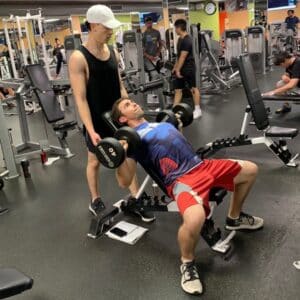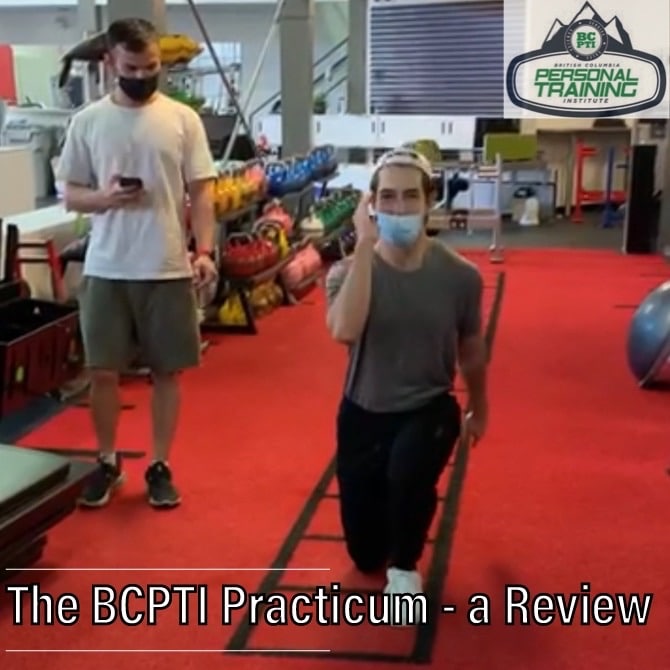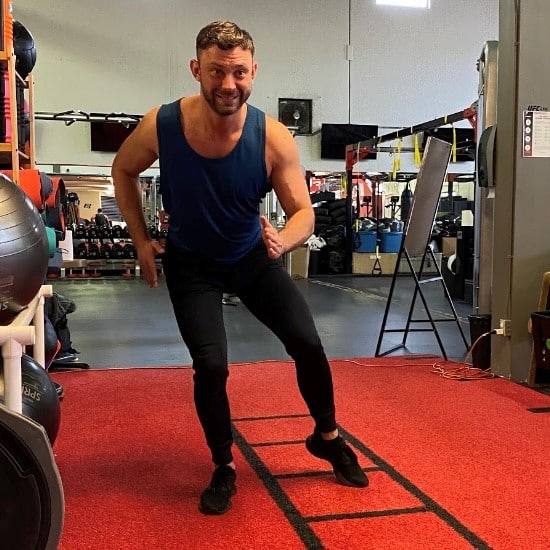October 11, 2019
Matt’s Inside Look: Construction Job by Day, Personal Trainer School at Night
Now that we’re on the 2nd half of our 7-week Personal Trainer Certification course, it’s time for a recap of Matt’s progress so far. He’s proving to be an inspiring role model and is navigating our accelerated career prep program with passion, dedication and a great work ethic! Check out his recap of the first month of the program.
“So far this has been a positive, motivating and exciting experience for me. I’m working a full-time job in construction and then spending 14 hours in class per week as well as time studying every day and my daily workouts at the gym. It’s a balancing act but at the end of the program I’ll be able to jump into a full-time job as a personal trainer – I’m a bit nervous for the big change but it’s pretty exciting to think about getting up every day to do something I really love. For now I’m focusing on the positives so that I can get everything done!”
Week 1 of the program is all about the Motivation System – learning about different styles of communicating, getting into the neuroscience of motivation and behaviour change and practicing motivational interviewing techniques to help build rapport and trust with prospective clients. Students also get to shadow sessions with personal trainers working in our placement clubs, participate in group workouts to understand popular fitness trends and start to build their professional network by connecting with club leaders and managers who can help mentor them. For our students who look to take advantage of the guaranteed job placement option at the end of the program, some of these fitness pros will become their future teammates!
“So we did the Social Styles Inventory in class tonight – I learned that my 2 dominant communication strategies are Analytical and Amiable. Analytical style can be recognized by their maximum effort to organize, need for accuracy/being right/achievement and focus on the task. Amiable style makes a maximum effort to relate, tendency to reject conflict, and need cooperation, security and acceptance. What was interesting was not just learning about my own style but also getting the tips on how to communicate more effectively with people that have a different style. I could totally relate to times when I tried to communicate with someone and it didn’t go well. Looking back I can see that they needed a more direct or expressive type of communication. I can see this really helping when working to get to know gym members and starting to work with new clients!
I was also able to get into a couple of gyms, meet some trainers, shadow sessions and learn about the small group training program. For shadow sessions, both clients were aiming to lose weight but each trainer approached that goal differently based on the clients’ experience and abilities. And for the group training session it was great to watch how the trainer managed the group, helping people of different levels workout together successfully. I noticed that the participants worked harder because there was a bit of friendly competition and energy between everyone. Seems like a great way to help people get motivated and having fun.”

In Week 2 we focus on the human body, organ systems and understanding the science behind the training and nutrition recommendations we make to our clients. We cover topics like: understanding the digestive system, how hormones work, cardiorespiratory physiology, energy systems, the nervous system and then bone and muscle anatomy.
“We tried a Strength-Hypertrophy-Interval Training program today. It was an interesting program because it combined different energy systems into one workout. In class we learned about the 3 energy systems: aerobic, anaerbic and ATP-PC. Different styles of training require different energy system utilization so when we did the workout we had a chance to feel the difference between the systems. It was really important to nail the right amount of load for the rep scheme and especially the rest times. Resting for too long and letting the heart rate drop affects the hormone response of the workout so programming and timing rest appropriately is a big way to change our clients’ workout experience and help them get better results.”

In Week 3 we cover myofascial lines, posture and assessments. This is such an important week when we talk about writing programs for clients that are going to keep them safe, injury-free, moving better and gaining strength & muscle. There’s always lots of “a-ha” moments for our students as they have their own static posture, overhead squat and fitness testing assessments done. When you have the right information, it becomes much easier to figure out what the right work is!
” I was stripping a suspended slab in the underground parkade. Even though I plan out my work and pay attention to safety and know my escape route, the last shore collapsed and it dropped on my neck and shoulder. This could have gone a lot worse – I’m grateful for the onsite first aid and I’m hoping I don’t miss too much while I’m recovering.”
Matt was a bit worried about falling behind in class but his accident gave us a chance to address one of the fundamental beliefs of our training philosophy. “Stacking movements and load on top of dysfunction leads to more dysfunction. Being pain-free, ensuring movement quality and appropriate rest are always priorities!” Once the students return from reading break we will dive into flexibility, foam rolling, proper core training and applying what we learned about functional biomechanics and posture to our training sessions and program design. Many clients are cleared for exercise but still have aches, pain, injury history and postural imbalances that we, as personal trainers, need to address or accommodate in order to help them train safely and effectively!
We’re wishing Matt a speedy recovery!
Inspired by Matt’s story? To find out more about the BCPTI program click here.’
Tags:
Related Posts
We’re here to help you!
Questions, comments or want to register? Fill out the form below and we will contact you shortly. Thanks!
"*" indicates required fields



